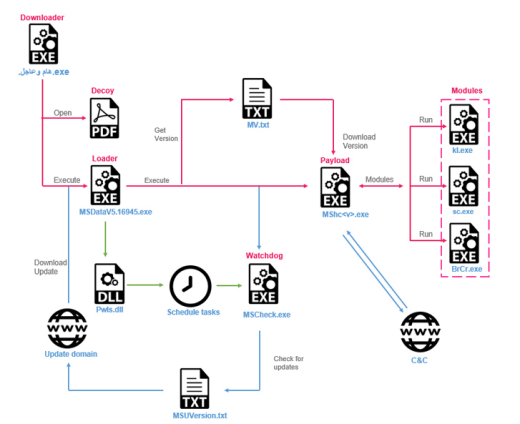Researchers detected a cyberespionage campaign in Libya that employs a new custom, modular backdoor dubbed Stealth Soldier.
Experts at the Check Point Research team uncovered a series of highly-targeted espionage attacks in Libya that employ a new custom modular backdoor dubbed Stealth Soldier.
Stealth Soldier is surveillance software that allows operators to spy on the victims and exfiltrate collected data.
The researchers noticed that the Stealth Soldier infrastructure has some overlaps with infrastructure the The Eye on the Nile, a campaign that targeted journalists and human rights activists in Egypt in 2019. The experts suspect that the recent attack could be linked to the same threat actor.
The newest version of the malware (Version 9) was likely employed in February 2023, while the oldest version discovered by the researchers (Version 6) dates back to October 2022.
“Stealth Soldier malware is an undocumented backdoor that primarily operates surveillance functions such as file exfiltration, screen and microphone recording, keystroke logging and stealing browser information.” reads the report published by Check Point.
Some of the C2 domains used by the attacker masquerade as sites belonging to the Libyan Foreign Affairs Ministry.
The infection chain commences with the execution of the downloader delivered via social engineering attacks. The experts explained that the infection chain is complex and involves six files downloaded from the C&C server.
Below are the main files used in the infection chain:
- Loader (MSDataV5.16945.exe) – Downloads PowerPlus, an internal module to run PowerShell commands, and uses it to create persistence for the watchdog. Runs Stealth Soldier’s final payload.
- Watchdog (MSCheck.exe) – Periodically checks for an updated version of the Loader and runs it. Persistent using Schedule Task and the Registry Run key.
- Payload (MShc.txt) – Collects data, receives commands from the C&C server, and executes modules.
The downloader fetch and opens a decoy empty PDF file from the C2, then downloads a loader from filecloud. The loader downloads a .NET module called PowerPlus and executes PowerShell code. PowerPlus is used to run two commands, one of them to maintain persistence and the other for querying details about the task into a file named DRSch.
The process involves the use of a watchdog as an update mechanism. In the last stage of the infection chain, the malware decrypts the payload before running it as a shellcode, which loads the payload and passes the execution to its main logic.
The malware supports different types of commands, some of them are in the form of plugins that are downloaded from the C2. Other commands are modules inside the malware-
“The investigation suggests that the attackers behind this campaign are politically motivated and are utilizing the Stealth Soldier malware and a significant network of phishing domains to conduct surveillance and espionage operations against Libyan and Egyptian targets.” Check Point concludes. “Given the modularity of the malware and the use of multiple stages of infection, it is likely that the attackers will continue to evolve their tactics and techniques and deploy new versions of this malware in the near future. Finally, our analysis revealed a connection to the previously exposed “Eye on the Nile” campaign.”
Follow me on Twitter: @securityaffairs and Facebook and Mastodon
(SecurityAffairs – hacking, Stealth Soldier)
The post Stealth Soldier backdoor used is targeted espionage attacks in Libya appeared first on Security Affairs.


